This is a curated list of books, content and tools about Behavioural Science and the way we make decisions.
It is inherently biased, and no doubt there are some major omissions from the list (sorry Dan Ariely, Robert Cialdini and many others).
The resources listed here are simply those that are well known to the Insight Platforms team; and there is no hierarchy implied in the order in which they appear below.
We wanted to make sure we covered the basics, and gather different points of view. There is much more content on Behaviour Insights across the site; in particular the masterclasses at the Behavioural Insights Summit.
What are Behavioural Insights?
We covered the basics of behavioural insights and their importance to Marketing and Market Research in the article “What are Behavioural Insights?”
Now we are going to share our favourite content about behaviour, brain, biases. It is such a potent theme, with so many different approaches that it was a challenge to stick to this list. We have narrowed down a few that are more related to marketing and behaviour driving.
Hooked: How to Build Habit-Forming Products by Nir Eyal
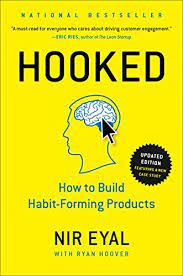
Nir Eyal designed the Hook Model, a framework with 4 phases: Trigger, Action, Variable Reward, and Investment. He explains how these phases lead to behavioural change by encouraging our brain to form associations which challenge existing behaviours and emotions; all by using variable rewards to trigger investment – the last could be monetary, but also time, for example.
The Hooked model is underpinned the chemical reaction in our bodies when we are expecting a reward: our brain produces the neurotransmitter called dopamine. And if the reward is unexpected, your brain activates parts related to wanting and desire.
This model helps to show how interface design and marketing can use external triggers and generate more effective calls-to-action.
Everybody Lies by Seth Stephens-Davidowitz
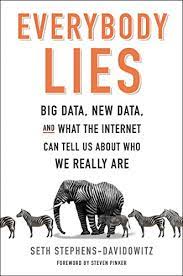
It seems bold, but it is true. Even us, research professionals, we have been questioning the truth behind claimed responses. Hence the growing importance of behavioural research. In this book, Seth shows that everybody lies, even to themselves.
However, in Internet searches, people feel safe to confess the truth because they don’t think they are being observed. Huge mistake! The internet is watching you! Big Data analysis can reveal biases deeply embedded within us, can reveal questions we’re afraid to ask but which might be essential to our well-being.
Imagine knowing billions of people footprints in Google, social media, dating apps etc? It gives insight on what people really think, what they really want, and what they really do. If you don’t believe it, maybe you are lying to yourself!
Blink by Malcolm Gladwell
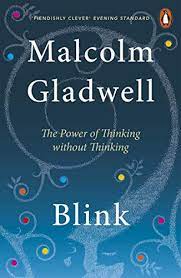
The Power of Thinking without Thinking, how crazy is that? It is not gut feeling… it is your brain scanning all your memories and impressions until now and guiding your reactions, to preserve you from physical or moral damage… In a few seconds!
in Blink, Malcolm Gladwell shows that snap judgements and first impressions are somewhat fact based! The process of snap decisions is not rational or something we are aware of – it is a process called thin-slicing – where we judge, with little information. It is like choosing a book by its cover.
This choice will be driven by stereotypes, both conscious and subconscious, dislikes and likes, as well as prejudices. If you know the impact of quick decisions, their strengths, and pitfalls, you can actually shape the way you act and when you use them.
The Choice Factory by Richard Shotton
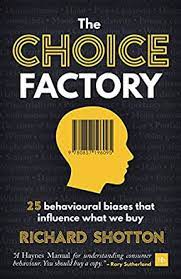
I personally love understanding biases! And this book helps uncover the biases that influence our purchases and brand choices. It shows how behavioural science can be applied to marketing and advertising.
The principle is that we can easily be unconsciously influenced — often by irrelevant things. In The Choice Factory, Richard Shotton unlocks 25 and suggest how to leverage them into efficient marketing communications.
Let’s see an example, the Pain of Payment: when we pay with cash, you feel the spend much more than with credit card. Knowing this fact helps to create strategies to automate payment and encourage spend. Just look at the explosive growth of BNPL (Buy Now Pay Later) solutions like Klarna.
For more from Richard, check out these Insight Platforms masterclasses:
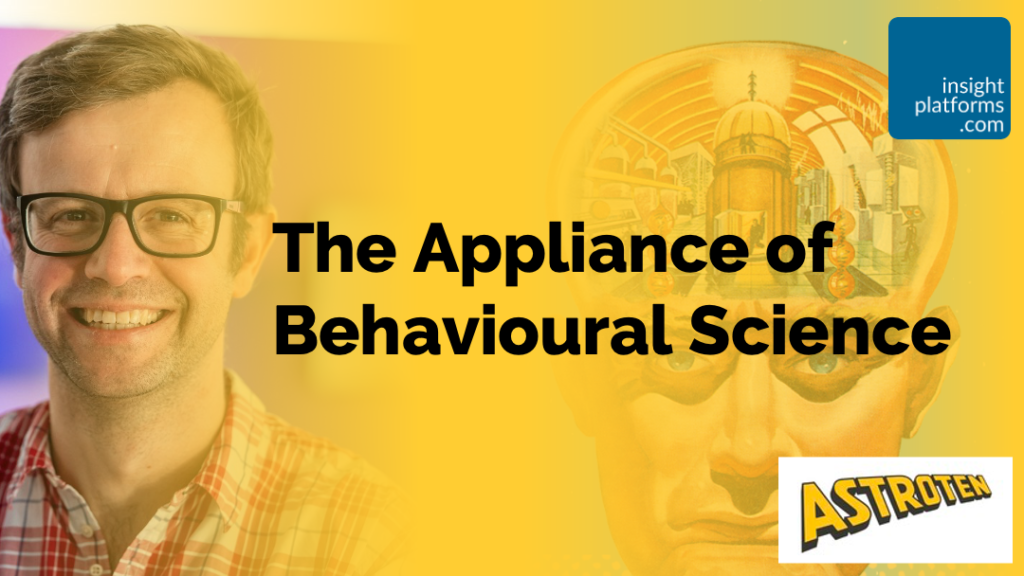
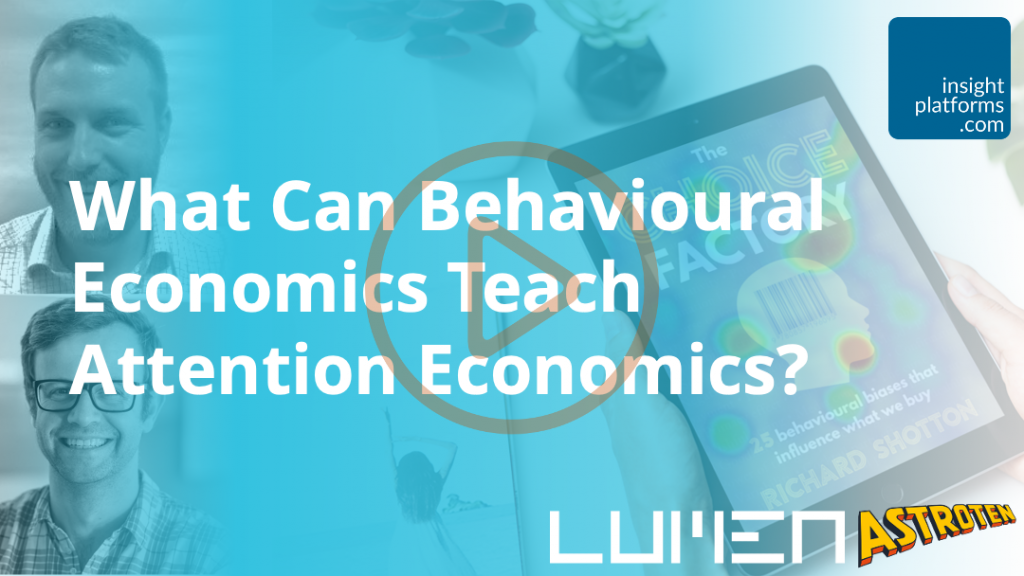
Thinking Fast and Slow by Daniel Kahneman
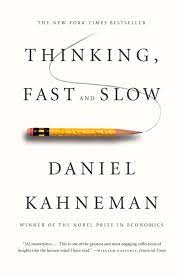
Daniel Kahneman is the psychologist who developed the concept of System 1 and 2 thinking, which states that decision-making is not entirely conscious or rational. There are two modes of thinking, that we’ve seen in our previous article:
System 1 (Fast): instantaneous, driven by instinct and repertoire.
System 2 (Slow): is slower, driven by deliberation and logic.
Those are not exclusive; they can actually work together to drive decision making. System 1 is not only triggered by emotion, but rational arguments can also spark this thinking mode.
The Brain by David Eagleman
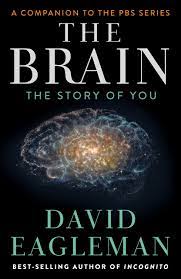
This is the story of how your life shapes your brain, and how your brain shapes your life. Crazy, isn’t it? It is the egg and chicken story all over again!
It is like travelling inside the human brain during its development and through all aspects, internal and external, that influence actions, decision making, thinking and the rationale behind what we do – even without noticing. It explains how our personality is made and what are the aspects affecting it during formation.
It even tackles how technology can enhance our bodies and lengthen our lives. For example, cochlear implants provide those who are deaf with a sense of hearing – a clear body enhancement provided by modern technology.
How Emotions are Made by Lisa Feldman Barret
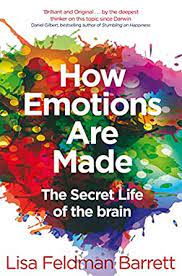
The construction of emotions is a new take on what emotions are, where they come from, and how they shape our lives. It starts in (try to guess!) the brain! Of course! It works as a lens that is constantly trying to make sense of everything that is happening (data being received). The brain needs to categorize this to be able to process, creating concepts. A concept is like a compressed version of hundreds or thousands of past experiences. Imagine how long it would take to scan all your mind to come up with reactions? Too long! Therefore, the brain starts reacting even before it has received all the data – like a simulation or prediction.
For example, if you are going to visit a dear friend, your brain predicts feelings of joy and happiness. And you start feeling happy even before getting there!
One of the more provocative elements of the book is a systematic deconstruction of Paul Ekman’s theory of the universal expression of emotion. in fact, many of Feldman Barrett’s ideas remain highly controversial: plenty of behavioural researchers strongly reject the theory that all actions are actually driven by predictions.
Decoded by Phil Barden
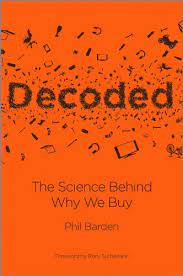
Phil Barden gathers insights from the fields of Behavioural Economics, psychology and neuro-economics to explain why we buy what we buy.
He describes how consumers make subconscious decisions based on periphery, experience and intuition, called autopilot. The components of this autopilot work with our brains mental associations, that later will drive purchase decisions.
By knowing how the brain decides, it is possible to understand why people buy products, services and brands. And finally, apply this knowledge in marketing to improve relevance, differentiation and credibility.
Why We Do What We Do by Edward L. Deci & Richard Flaste
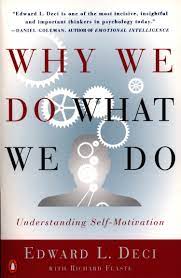
Have you ever heard that motivation comes from the expected reward? This book shows otherwise…
According to it, the best way to motivate people is to support their sense of autonomy. Explaining the reasons why a task is important and then allowing as much personal freedom as possible. This should stimulate interest and commitment, in a more effective way than the standard system of reward and punishment.
If the only driver is the reward, tasks would not be completed without any reward, and a cycle is created. This is where the self-determination theory, or SDT, comes into play. It means teaching people to become more autonomous and relying on internal motivators to do things. In summary, people are encouraged to find ways to motivate themselves to do things.
Mindset by Carol S. Dweck
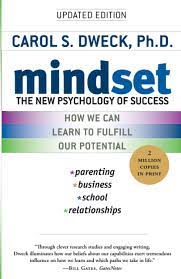
According to author Carol S. Dweck, it’s not just our abilities and talent that bring us success – but whether we approach things with a fixed or growth mindset.
With the right mindset, we can motivate ourselves and other people to achieve personal and professional goals. People with a fixed mindset believe abilities are fixed and cannot be stimulated. People with the growth mindset believe that abilities can be developed. She states that all great parents, teachers, CEOs, and athletes who understand this simple brain concept, are able to create love of learning and resilience that is the basis of great accomplishments.
Pocket Biases App by Buster Benson
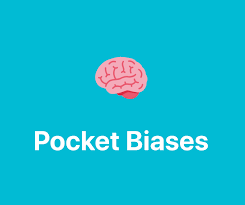
The concept of ‘cognitive bias’ was introduced by Kahneman and Tversky in the 1970s. It describes our tendency to systematic responses to judgments and decisions that are essentially flawed (from a ‘rational’ perspective).
The Pocket Biases app lists more than 200 different biases that affect our decisions. They can be driven by information in your head (filter), beliefs in your heart (making sense and meaning) and plans in your hand (jump to conclusions take enable you to act your plans).
The app categorises them into pockets called strategies. Buster Benson, creator of the app, says it is about understanding how they work to process information, and what are the shortcuts to make decisions and take actions. The app offers the explanation, rationale, and examples of new bias every day.
Get the app herehttps://pocket-biases.glideapp.io/.
Behavioural Research Guides from iMotions

iMotions provides a software platform that lets researchers integrate sensors such as eye tracking devices, EEG, galvanic skin response, heart rate and facial expressions.
You can use it to integrate all your consumer, product and neuromarketing research data, and it is used for academic as well as commercial research.
The iMotions team have produced a series of handy guides to Eye Tracking, Facial Expression Analysis, Galvanic Skin Response, EGG and several other advanced methods.
It is a lot to read and process, and I am sure you brain is overwhelmed by now.
Check out the masterclasses at the Behavioural Insights Summit to get a broader view of brain dynamics and how they affect your decisions and purchases. And, of course, how it can be leveraged into marketing strategies.
After that, you can pick the theme you liked most to deep dive!! Enjoy the reading!

